For decades, astronomers have been blind to what our galaxy, the Milky Way, really looks like. After all, we sit in the midst of it and can't step outside for a bird's eye view.
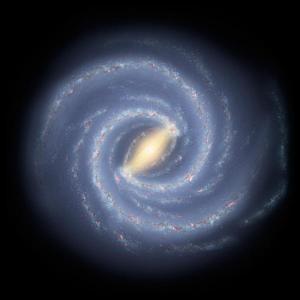
|
| ©NASA/JPL-Caltech
|
| Using infrared images from NASA's Spitzer Space Telescope, scientists have discovered that the Milky Way's elegant spiral structure is dominated by just two arms wrapping off the ends of a central bar of stars. Previously, our galaxy was thought to possess four major arms.
|
For years, scientists have been trying to create artificial viruses that are as proficient as natural ones in delivering materials to cells. Successful, artificial viruses could carry therapeutic agents into human cells to treat a variety of diseases. Unfortunately, synthesizing an artificial virus with the ideal shape and size for maximum delivery efficiency is extremely difficult. A common method for their generation involves polyion coupling, which often leads to aggregates with uncontrollable dimensions.
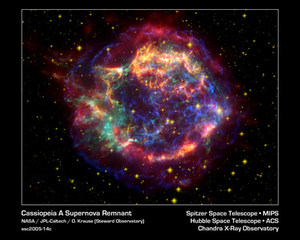
|
| ©NASA/JPL-Caltech/University of Arizona/ Science
|
| A false-color image shows the supernova remnant Cassiopeia A. The picture combines infrared data from the Spitzer Space Telescope (red), visible data from the Hubble Space Telescope (yellow), and x-ray data from the Chandra X-Ray Observatory (green and blue).
|
Astronomers have used an interstellar "mirror" to solve the longstanding mystery over what kind of supernova created Cassiopeia A, one of the brightest radio objects in the sky.
Cass A, as the object is often called, is the expanding remains of a stellar explosion about 9,000 light-years away that is believed to have occurred around A.D. 1680. Until now no one has been able to pinpoint the exact nature of the blast.
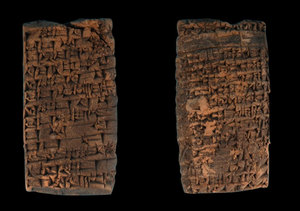
|
| ©Paola Negri/Sergio Petronilli/ENEA
|
| The cuneiform tablets housed in Iraq document how people lived for millennia in ancient Mesopotamia. They describe codes of law, treatises and economic transactions, from the beginning of writing, around 3350 B.C., until the end of the pre-Christian era.
|
A technology normally used in reconstructive surgery to create prosthetic limbs is now being applied to create reproductions of Iraq's precious and fragile
cuneiform clay tablets, according to an Italian team of researchers.
Thousands and thousands of artifacts were stolen and broken at Bagdad's museums following the invasion of Iraq in 2003, in what has been called the most catastrophic theft of antiquities since World War II.
Jeanna Bryner
Space.comMon, 02 Jun 2008 17:16 UTC
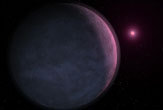
|
| ©Space.comn
|
There's a new extrasolar planet on the block: a mini-orb likely covered with a deep ocean. And it takes the record for the lowest mass exoplanet to orbit a normal star, astrophysicists announced today.
The li'l planet - weighing in at three times Earth's mass -
grabs the lightweight title from a five Earth-mass planet just announced in April.
Maggie Fox
ReutersTue, 03 Jun 2008 10:54 UTC
WASHINGTON (Reuters) - Dying the red breast feathers of barn swallows not only won the birds more mates -- it made their testosterone levels shoot up, U.S. researchers reported on Monday.
The dye itself did not change biology -- but it did change the way other birds reacted to the enhanced males, said Rebecca Safran of the University of Colorado at Boulder, who led the study.
Roger Highfield
TelegraphThu, 29 May 2008 03:45 UTC
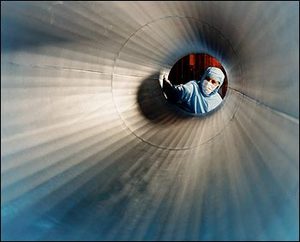
|
| ©Unknown
|
| Cleaning a vacuum spatial filter for the Vulcan Petawatt Facility during its construction
|
A laser in Oxfordshire has heated matter to 10 million Celsius, hotter than the surface of the Sun, marking a major landmark in research.
The milestone in the field of high energy density physics has been reached by an international team from Japan, the EU and the US working at the Rutherford Appleton Laboratory.
Meron Rapoport
HaaretzSun, 01 Jun 2008 02:47 UTC
Dozens of skeletons from the early Islamic period were discovered during excavations near the Temple Mount, on a site slated for construction by a right-wing Jewish organization. Contrary to regulations, the skeletons were removed, and were not reported to the Ministry of Religious Services. The Israel Antiquities Authority termed the incident "a serious mishap."
Europeans want to peek into our soil and see how dry we are.
And an Iowa State University professor is eager to help, and even check their results.
The European Space Agency is set to launch the Soil Moisture and Ocean Salinity satellite this fall as researchers try to learn more about the amount of moisture in the ground in the United States and around the world.
ISU's Brian Hornbuckle is helping them. For the past year, Hornbuckle has led a team of investigators from ISU, the University of Iowa, and the USDA's National Soil Tilth Laboratory that measures moisture content in Central Iowa soil in using land-based technology. Now, he is working with the ESA.
Without [internet] neutrality, large retailers and corporate media would show rich and snappy response while entrepreneurs, nonprofits, local/public news sites would seem to just crawl. The outcome is not hard to guess at.
With wars, elections, natural disasters, economic and environmental perils rightfully filling the news it is easy to consign Internet issues to our mental back-pages, as exotic marginalia.
The Internet, however, has quietly become a dominant voice in our democratic discourse. Presidential campaigns hinge on effective net presence and fundraising. The free flow of information across the country, indeed around the globe, lets us discover, accurately judge, and respond to events affecting us.

